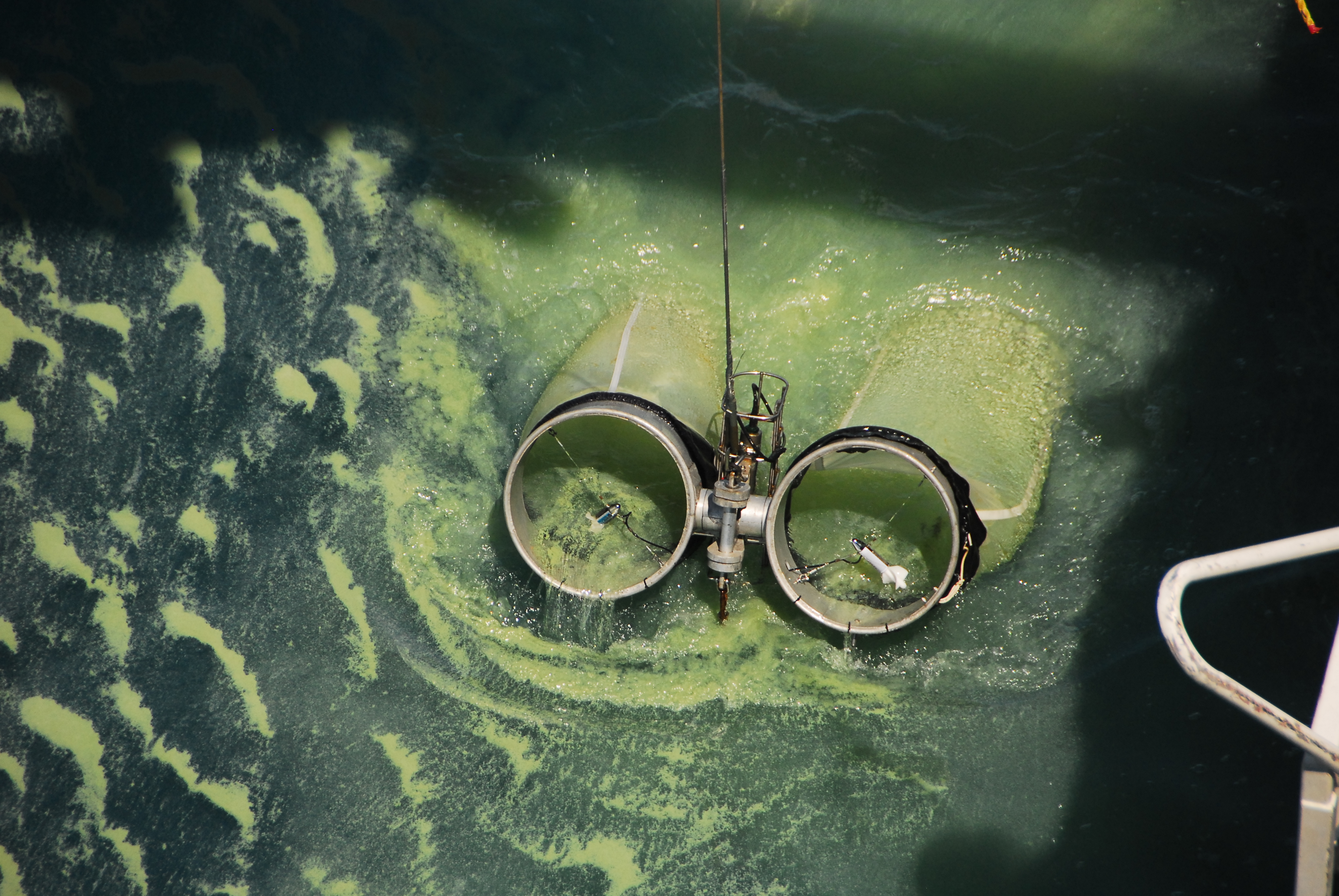What they're used for
Multinet system

The net has a one metre square mouth area and is used to sample plankton and micronekton in the water column to depths of 1000 m.
A net monitoring camera, light and an altimeter assist with the platform’s piloting, and an on-board SBE37 and LI-COR sensor samples the water column during deployment. Two flow meters monitor water flow and sampling volume.
Surface net
The surface net consists of a 1 m2 steel frame constructed from 50 mm box section galvanised steel. A net with mesh size between 335 micron and 1 mm2 can be used. The net is designed to fish the surface waters for plankton and fish larvae.
Bongo nets
A very fine tubular mesh net to sample plankton.
Trawl mensuration and monitoring systems
A device to assist in the collection of data associated with the trawl net. Used to ascertain the height, width and depth of the mouth of the net.
How they work
Multinet system
The multinet system is towed through the water on a conductive cable, which enables remote control and monitoring of system performance.
During deployment, the nets are remotely released at chosen depth intervals or times. Typically, around 1000 L of water is filtered through the nets and small catch collected in cod-ends.
The volume of water is measured, calculated and logged by flow sensors inside and outside the net frame. This enables the number of animals per cubic metre of water to be determined at the various depths. It can operate at up to 1000 m maximum depth on RV Investigator's towed body wire.
Various other sensors can also be fitted to the multinet system, such as a CTD instrument or an optical plankton counter.
Surface net
The surface net is towed from a boom mounted on the foredeck of the vessel. The net is designed to fish the surface waters for plankton and fish larvae, using the boom to keep the net clear of the vessel.
Key features
Multinet system
- SBE37 and LI-COR – live CTD and PAR data acquisition and monitoring
- Spare 12VDC/24VDC serial port for additional payloads
- Spare 48VDC serial port for LOPC integration
- Spare 12VDC/24VDC Ethernet port for additional payloads
- Deep Sea Power and Light Wide-i Seacam – wide remote viewing
- Deep Sea Power and Light floodlight – remote controlled
Considerations
Multinet system
- A maximum of 5 fully independent open/close nets
- Can be loaded with 10 nets and closing one net will concurrently open the next
- The platform can only be deployed with acceptable weather and sea-state conditions forecast for the entirety of the deployment
- Additional power limits are available for added payloads.
VIDEO: Trawling operations on RV Investigator
What they're used for
Multinet system
The multinet system is a multi-net platform able to remotely open and close other nets. It is able to hold and control up to ten nets with mesh sizes of 335 μm, 500 μm and 1000 μm.
The net has a one metre square mouth area and is used to sample plankton and micronekton in the water column to depths of 1000 m.
A net monitoring camera, light and an altimeter assist with the platform’s piloting, and an on-board SBE37 and LI-COR sensor samples the water column during deployment. Two flow meters monitor water flow and sampling volume.
Surface net
The surface net consists of a 1 m2 steel frame constructed from 50 mm box section galvanised steel. A net with mesh size between 335 micron and 1 mm2 can be used. The net is designed to fish the surface waters for plankton and fish larvae.
Bongo nets
A very fine tubular mesh net to sample plankton.
Trawl mensuration and monitoring systems
A device to assist in the collection of data associated with the trawl net. Used to ascertain the height, width and depth of the mouth of the net.
How they work
Multinet system
The multinet system is towed through the water on a conductive cable, which enables remote control and monitoring of system performance.
During deployment, the nets are remotely released at chosen depth intervals or times. Typically, around 1000 L of water is filtered through the nets and small catch collected in cod-ends.
The volume of water is measured, calculated and logged by flow sensors inside and outside the net frame. This enables the number of animals per cubic metre of water to be determined at the various depths. It can operate at up to 1000 m maximum depth on RV Investigator's towed body wire.
Various other sensors can also be fitted to the multinet system, such as a CTD instrument or an optical plankton counter.
Surface net
The surface net is towed from a boom mounted on the foredeck of the vessel. The net is designed to fish the surface waters for plankton and fish larvae, using the boom to keep the net clear of the vessel.
Key features
Multinet system
- SBE37 and LI-COR – live CTD and PAR data acquisition and monitoring
- Spare 12VDC/24VDC serial port for additional payloads
- Spare 48VDC serial port for LOPC integration
- Spare 12VDC/24VDC Ethernet port for additional payloads
- Deep Sea Power and Light Wide-i Seacam – wide remote viewing
- Deep Sea Power and Light floodlight – remote controlled
Considerations
Multinet system
- A maximum of 5 fully independent open/close nets
- Can be loaded with 10 nets and closing one net will concurrently open the next
- The platform can only be deployed with acceptable weather and sea-state conditions forecast for the entirety of the deployment
- Additional power limits are available for added payloads.
